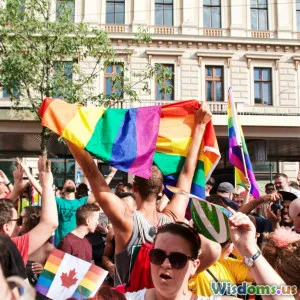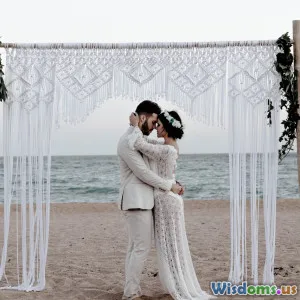
Exploring Open Relationships Trends and Real Life Outcomes
9 min read A deep dive into open relationships: current trends, challenges, and lifespan outcomes backed by research and real-world examples. (0 Reviews)
Exploring Open Relationships Trends and Real-Life Outcomes
Open relationships, once cloaked in taboo and misunderstanding, are steadily gaining visibility and recognition in today’s evolving societal landscape. As people increasingly question traditional monogamous frameworks, there is a surge of curiosity and adoption of alternative relational models. But what do these trends really mean? How do open relationships function in practice? And what kind of outcomes do individuals experience when they step beyond monogamy?
This comprehensive exploration dives into the cultural momentum, communication dynamics, challenges, and long-term outcomes associated with open relationships. Supported by recent data, expert opinions, and real-life anecdotes, it seeks to provide nuanced, evidence-based insight for anyone interested in understanding this complex and evolving aspect of human relationships.
The Rise of Open Relationships: Context and Cultural Shift
Historically, monogamous marriage has been deemed the gold standard for romantic commitment across many cultures. Yet, changes in social attitudes toward love, sexuality, and personal freedom have sparked a reconsideration of relationship structures.
Societal Changes Fueling Interest
Several societal factors contribute to the growing acceptance of open relationships:
- Increased Visibility: Media representation, including documentaries, podcasts, and flirtations in popular TV shows like “You Me Her” and “Polyamory: Married & Dating,” have demystified non-monogamy.
- Millennial and Gen Z Mindsets: Surveys indicate younger generations emphasize individual fulfillment and authenticity over tradition. The 2020 Pew Research Center study showed that younger adults were significantly more likely to accept diverse relational arrangements.
- Digital Era Dating: Apps designed with openness to non-traditional setups, such as Feeld and OkCupid’s ‘non-monogamy’ options, provide easier access and community support.
Data Insights on Prevalence
Research from the 2017 Journal of Social and Personal Relationships found that about 4-5% of participants reported being in an open relationship, with an additional 20% having some experience with consensual non-monogamy at some point. These percentages are thought to be increasing in urban centers and progressive communities.
Building Blocks of Successful Open Relationships
Not all open relationships look the same: they range from swinging to polyamory to ethically negotiated casual encounters. Despite this variety, successful ones often share key foundations.
Communication: The Keystone
Open relationships necessitate exceptional communication skills. Transparency about boundaries, feelings, and changes helps partners navigate jealousy and maintain trust.
For instance, Dr. Elisabeth Sheff, a respected researcher in polyamory, highlights that “open dialogue enables emotional safety, where insecurity can be aired constructively.” Couples who regularly discuss their needs, agreements, and challenges tend to report higher satisfaction.
Establishing Boundaries and Agreements
Clearly articulated parameters define what is acceptable behavior. Some partners may allow dating others but restrict overnight stays; others might have time-limiting arrangements on external relationships.
An example is Jessica and Mark, who maintain an open relationship for seven years. They check in weekly on feelings and adjust boundaries in real time, which Jessica credits for minimizing conflicts.
Supporting Autonomy and Respect
Supportive open relationships acknowledge each individual’s right to pursue fulfillment without control or coercion. As sociologist Dr. Meg-John Barker notes, "Respecting autonomy ensures that relationships are consensual and empowering rather than a source of resentment."
Challenges and Real-Life Outcomes
While open relationships can be fulfilling, they come with unique challenges.
Navigating Jealousy and Insecurity
Despite misperceptions, jealousy remains common. However, partners often learn to reframe jealousy as a signal for underlying needs rather than an obstacle.
Therapist Franklin Veaux advises approaching jealousy with curiosity. For example, uncovering feelings of insecurity or fear of abandonment can lead to deeper emotional work and growth.
Managing Social Stigma
People in open relationships might face judgment from family or community. This can generate stress, making discretion a necessity for some couples despite their openness.
A 2018 study in "Psychology of Sexual Orientation and Gender Diversity" highlights that social bias negatively impacts mental well-being for non-monogamous individuals.
Long-Term Viability and Relationship Satisfaction
Contrary to assumptions that open relationships are less stable, studies reveal mixed longevity patterns. Some research suggests that, with equitable rules and communication, open relationships can be as durable and satisfying as monogamous ones.
The "Open Relationships Project" by the University of Minnesota found that about 30% of polyamorous relationships last over five years. Participants often report higher relationship satisfaction and personal freedom.
Real Stories
-
Case of Ella and Sami: After growing bored in their monogamous marriage, they chose ethical non-monogamy. Over 4 years, their emotional intimacy increased substantially alongside an expanded social network.
-
Challenge Illustrated: Dave and Lisa tried opening their marriage but struggled with jealousy and misaligned expectations, eventually returning to monogamy with renewed appreciation for their partnership.
Expert Advice for Those Considering Open Relationships
Experts emphasize prepared, informed decisions.
Self-Reflection and Readiness
Therapist Dr. Talia Parker recommends couples explore motivations and fears before opening relationships to avoid using non-monogamy as a band-aid for unresolved issues.
Education and Resources
Learning from books like "The Ethical Slut" by Dossie Easton and Janet Hardy or joining support communities can provide valuable frameworks and guidance.
Professional Counseling
Engaging therapists familiar with consensual non-monogamy can help partners navigate complex emotions and develop healthy norms.
Conclusion: The New Frontier of Relationship Diversity
Open relationships are not a panacea or a universal solution—they bring unique rewards and challenges. What matters most is the alignment of values, clear communication, and respect among partners.
As culture continues to broaden its understanding of love and commitment, open relationships represent a meaningful alternative for those seeking to redefine connection.
Whether one pursues this path or not, gaining nuanced knowledge helps dismantle misconceptions, supporting empathy and informed choices in complex relational landscapes.
In the end, the heart of all relationships—be it monogamous or open—is authenticity, trust, and mutual care.
References:
- Sheff, E. (2014). The Polyamorists Next Door.
- Pfeffer, C.A. (2017). "Non-monogamy in the Early 21st Century." Journal of Social and Personal Relationships.
- Pew Research Center (2020). "Changing attitudes toward relationships."
- Veaux, F. (2013). More Than Two.
- Barker, M.-J. (2013). Rewriting the Rules.
- University of Minnesota, Open Relationships Project (2021).
- Psychology of Sexual Orientation and Gender Diversity (2018). "Stigma and Mental Health in Non-Monogamy."
Rate the Post
User Reviews
Popular Posts




















